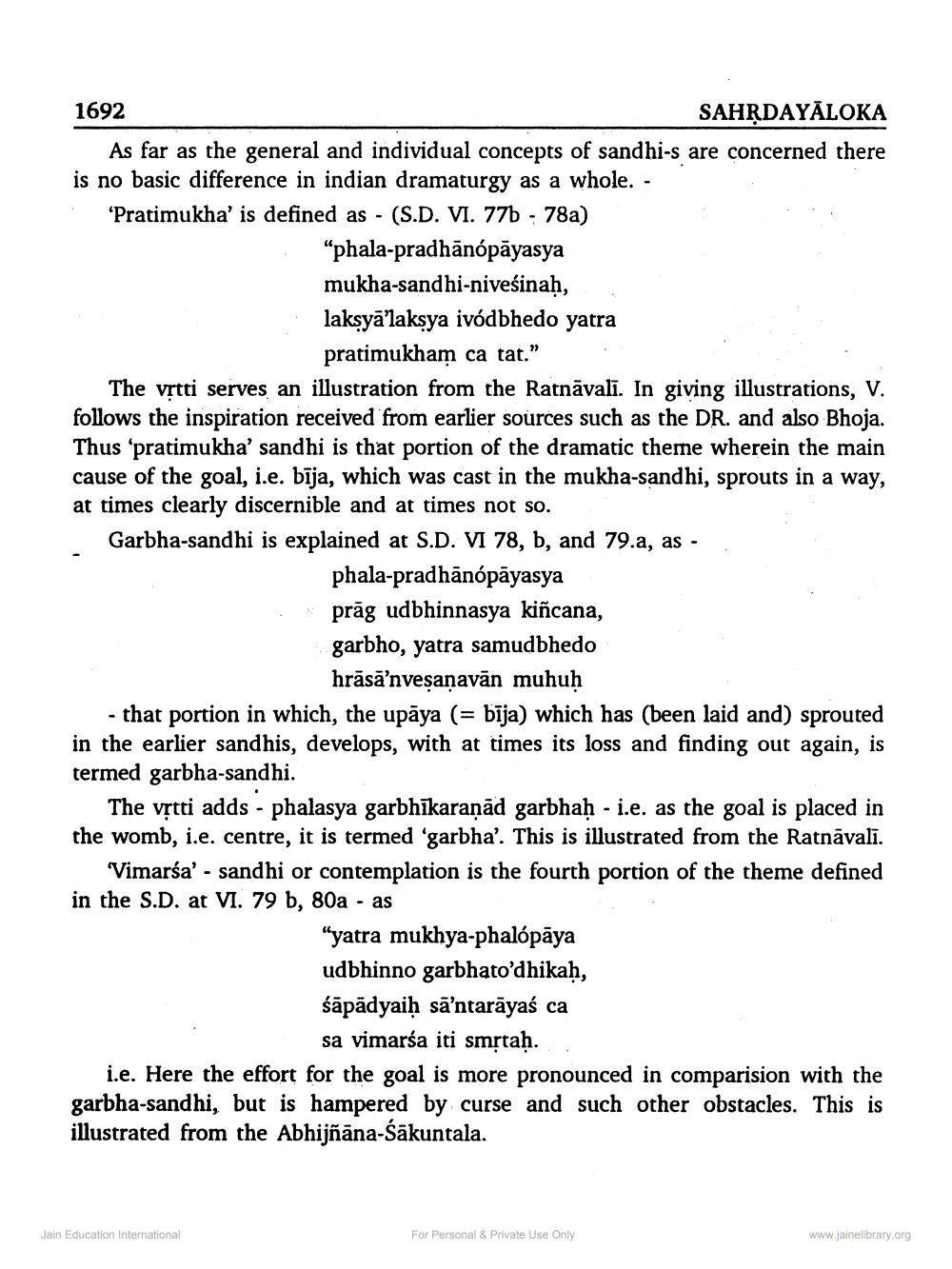________________
1692
SAHRDAYĀLOKA As far as the general and individual concepts of sandhi-s are concerned there is no basic difference in indian dramaturgy as a whole. - 'Pratimukha' is defined as - (S.D. VI. 77 - 78a)
"phala-pradhānópāyasya mukha-sandhi-niveśinah, laksyā'laksya ivódbhedo yatra
pratimukham ca tat.” The vrtti serves an illustration from the Ratnāvalī. In giving illustrations, V. llows the inspiration received from earlier sources such as the DR. and also Bhoja. Thus 'pratimukha' sandhi is that portion of the dramatic theme wherein the main cause of the goal, i.e. bīja, which was cast in the mukha-sandhi, sprouts in a way, at times clearly discernible and at times not so. Garbha-sandhi is explained at S.D. VI 78, b, and 79.a, as -
phala-pradhānópāyasya prāg udbhinnasya kiñcana, garbho, yatra samudbhedo
hrāsā’nveșaņavān muhuḥ - that portion in which, the upāya (= bīja) which has (been laid and) sprouted in the earlier sandhis, develops, with at times its loss and finding out again, is termed garbha-sandhi.
The vștti adds - phalasya garbhīkaraņād garbhaḥ - i.e. as the goal is placed in the womb, i.e. centre, it is termed 'garbha'. This is illustrated from the Ratnávalī.
Vimarśa' - sandhi or contemplation is the fourth portion of the theme defined in the S.D. at VI. 79 b, 80a - as
"yatra mukhya-phalopāya udbhinno garbhato'dhikah, śāpădyaiḥ sā’ntarāyaś ca
sa vimarśa iti smộtaḥ. i.e. Here the effort for the goal is more pronounced in comparision with the garbha-sandhi, but is hampered by curse and such other obstacles. This is illustrated from the Abhijñāna-Sakuntala.
Jain Education International
For Personal & Private Use Only
www.jainelibrary.org




